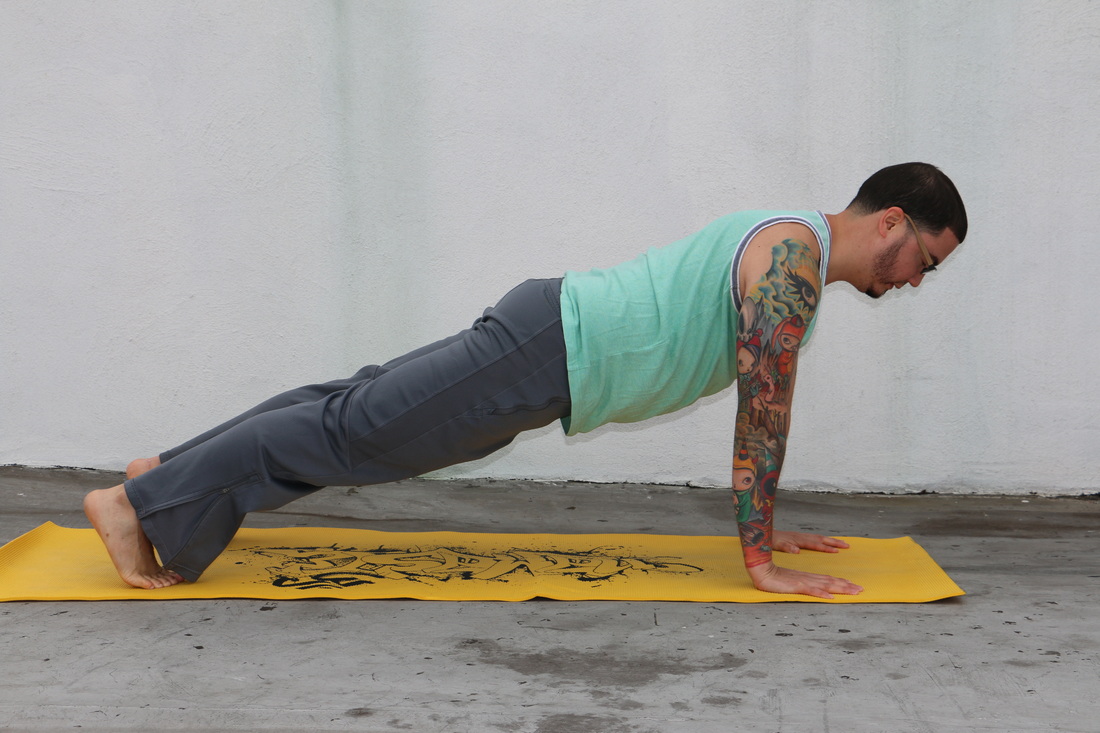|
"On your next inhale, glide forward to plank."
Dreaded words to many. Oh noooo… a plank. A high push-up. Ughh! Is your lower back feeling sore? Are your wrist aching? Is your pelvis dragging you down? All things we've felt at one point or another during this posture - which is why many of us dread it. I for one one have felt that way in the past, collapsing into my wrist and not evenly distributing my weight or activating my "core" [we'll get to that] enough, which added to my unease when approaching plank. So how can we feel lighter and embrace this asana with new found awareness? First and foremost, it's not solely about your arms bearing weight or any of the rest of your major muscles in your upper body. Yes, the shoulder joint - which is built for mobility - is engaged in stability. But I truly feel that because there is such a spotlight in bringing your "shoulders over your wrist," that many of us forget to engage the "core," which begins at your heels, spirals up the pelvis, into your abdominals and trunk before reaching your scapula and ultimately, shooting energy out of the crown of your head. That is your core. Are your quadriceps (thigh muscles) engaged? Straight legs, active with your heels lifted, energetically, moving towards the back of your mat. Integrating the mid-section, your pelvis, is imperative to keep you afloat and light. Especially to prevent a collapsing of the lower back, lift your pelvic girdle in line with your shoulders and look for a sensation of elongating your tailbone towards your feet to engage through your lower extremities and avoid that scooping in your lumbar-sacral region. Rolling the inner upper thighs towards your back body helps create that energy. So far… we've talked about the "core" & not once have I talked about isolating our abdominals nor finding a sensation at our heart region, which sometimes gets misinterpreted as such when the word "core" gets thrown around. Yes, you want your shoulders away from your ears, neck long and shoulder blades to draw towards one another across your back so your collarbones broaden. Tip: a good way to get this feeling is to lower your knees onto the mat, with your hips aligned over your knees, and work to find that opening in your front-body and engagement in your back body. After finding your alignment there, you can find some burn and work towards a full plank by starting on your knees then pressing into hands and toes to hover the knees a few inches off the ground [hold for 5-10 breaths] to begin a journey into plank. I didn't want to write a full dissertation on Phalakasana, but just touch on some points that are important when coming into this pose. Hopefully, you can come into this asana with less apprehension and a increased sense of direction, making your plank more powerful and more importantly, lighter. Questions, comments and/or feedback are encouraged… shoot me a response and lets talk some plank.
0 Comments
 What's up everyone? If I know you... thank you very much for your support and hope to see you whether on the mat or off of it. If you are a new friend, thanks for the support and I'm pleased you're a part of my life journey. On this blog section, you'll see what's going on with me, whether it has to do with our asana practice (I say ours because we all share the same/different thoughts and questions, or learn from each other through our daily exploration), meditation or, where I'll be teaching next week . Heck, you'll even find me post about movies, food, traveling ... anything. So, feel free to leave a comment, question, suggestion or a friendly "hello. " |
AuthorVicyasa™, your full-time dopamine dealer ... don't allow my confidence to offend your insecurity. Archives
July 2024
Categories
All
|

 RSS Feed
RSS Feed